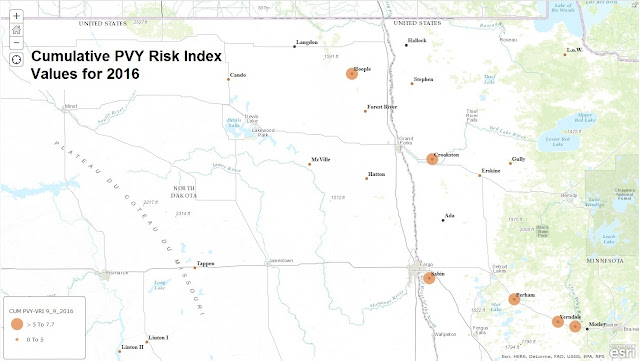Trap Catches Identified to July 21
Greetings!
Welcome to the Aphid Alert update for the week ending July 21. The aphid year continues!
Trap catch was up in a number of locations and others are reporting steady populations, including some efficient vectors. Vector numbers were up at Humboldt (32), Stephen (16), Brooks (37), Ada (28), Crookston (18), and Sabin (44). A number of Green peach aphids were recovered this week as well; Humboldt (1), Staples (1), Stephen (1), Perham (1), Crookston (2), and Sabin (3).
Added to the high vector flight numbers, we have a few more curve balls... Soybean aphid populations are rising in NW MN with many fields nearing or already past treatment threshold. A number of fields also have winged aphids, indicating the NW aphids are getting ready to move. Some of the NW populations are showing pyrethroid resistance, meaning that some fields aren't getting adequate control and this may add to the number of vector species moving around seed production areas. As we know, soybean aphid does not colonize potato but is a vector. They'll move through the crop, probing plants to determine their suitability as a host. Being disappointed, they will move onto the next plant candidate. Being an insect and not very insightful, that next candidate is the neighboring plant. They'll work their way through a seed field, probing and moving plant to plant, vectoring whatever inoculum is in the field.
Scouting obviously should be on the To Do list by now. And given the high vector catch numbers, and the potential for more, the use of crop oils is strongly recommended. Data shows that narrow range mineral oils (e.g. Aphoil, Stylet Oil) applied at least once per week can significantly decrease the spread of PVY (twice per week is even better).
Remember, keep scouting!
Click on any figure to see full size version.
2016 PVY Vector Risk Total for Comparison
Weekly Catch by Location
Cumulative Species Catch to Date by Location




No comments:
Post a Comment